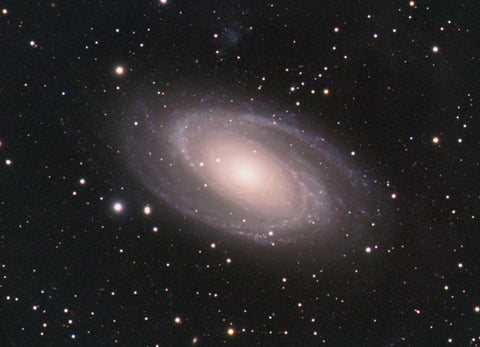
Backyard Observing for the Quarantined Astronomer
As governments and medical professionals across the globe are fighting the unprecedented COVID-19 pandemic, most of the public is being asked to stay home to help curb its spread. Although our homes are often plagued with light pollution, now is a great time to get out and spend some time with the night sky.

(Photo: NASA)
Phases of Venus
Venus can be found high in the sky after sunset, towards the west. Because it sits within Earth's orbit, Venus has phases just like the moon.
Over the next few weeks, Venus will make its way closer to Earth and during this time, you'll notice Venus shift from a half-illuminated disk to a crescent. These phases can easily be seen in small telescopes and higher magnifications. Using a moon or polarizer filter will also help, reducing the glow of Venus to reveal the phases a little better.
If you'd like a fun project for a young, budding astronomer, use a notebook and sketch the phases of Venus for the next several weeks. Make sure to note the size and position and watch as your sketches document the changing of the planet.

(Photo: Jerry Gardner, Shot with an Esprit 100)
Orion Nebula (M42)
A favorite among beginning astrophotographers, M42 is one of the few nebulae that can be seen visually. The faint whisps that make up the main nebulae formation can be seen using even a small telescope or binoculars. Visible in the early evening, M42 sits in the sword of Orion at nearly 1600 light years from Earth.
At the heart of M42 is a collection of stars known as the Trapezium. This small cluster illuminates much of the nebula and is composed of 10 stars known as: A, B, C, D, E, F, G, H1, H2 and I. For astronomers wanting to challenge themselves, try identifying stars E and F.

(Photo: NASA)
Eskimo Nebula (NGC 2392)
The Eskimo nebula is a planetary nebula, directly overhead in the constellation of Gemini. A planetary nebula forms when a star blows off its outer layers, leaving behind a sphere of dust and gas, with the remnants of the star in the center.
NGC 2392 is small and requires a higher magnification to be seen and a larger aperture like a 6” (150mm) or bigger will help resolve more details. The use of a light pollution (LPR), Oxygen III or UHC filter can also assist in bringing certain details out while viewing.

(Photo: Richard Wright, Shot with an 12" Quattro Imaging Newtonian)
M46
The open cluster M46 is a rather unique object to observe. The open cluster features a small planetary nebula that appears in the northern section of the cluster. While they appear to be connected, they're actually separate from one another with the nebula being several thousand light years closer to Earth than the cluster. Although these can be seen in a smaller telescope, a larger aperture works best when used in conjunction with a nebula filter.
M46 sits in the constellation Puppis at a distance of 5400 light years, while the small planetary nebula NGC 2438 is about 3000 light years from Earth.

(Photo: Kevin LeGore, Shot with an Esprit 150)
M81 & M82
Two popular, yet easily visible galaxies this season are M81 & M82. These two can generally fit in the same field of view on most telescopes and can be seen with telescopes as small at 72mm. M81 is a beautiful spiral galaxy, M82 is an irregular galaxy known as the Cigar galaxy (due to its shape), and the two of them together make for an appealing astrophotography target.
Large telescopes will be able to resolve finer details as well as (possibly!) other small galaxies in this region. Both sit in the constellation Ursa Major at a distance of 12 million light years from Earth.
